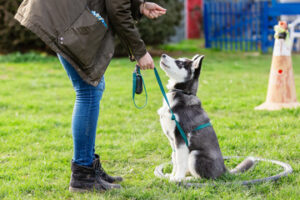Landscape Lighting Orlando, FL is a powerful way to transform outdoor spaces, adding both beauty and functionality to gardens, pathways, and outdoor living areas. Thoughtfully placed lighting can enhance the natural features of a yard, create a warm and inviting atmosphere, and increase safety and security around the home.

By using different lighting techniques and fixtures, homeowners can highlight architectural details, showcase landscaping features, and create an ambiance that extends the enjoyment of outdoor spaces well into the evening hours. Landscape lighting is not only about aesthetics but also about providing practical benefits such as improved visibility, increased security, and a more comfortable outdoor environment.
The first step in designing an effective landscape lighting plan is to evaluate the layout of the outdoor space and identify key areas that would benefit from illumination. Pathways, driveways, and entry points are some of the most important areas to light, as they provide both safety and guidance for guests. Strategically placed lights along walkways and driveways help prevent tripping hazards and create a welcoming environment. In addition to functional lighting, accent lighting can be used to highlight garden features such as flower beds, trees, shrubs, and water features. Up-lighting and down-lighting techniques can create dramatic effects, casting shadows and adding depth to the landscape. By combining different lighting techniques, homeowners can achieve a balanced and cohesive look that enhances the overall appeal of their outdoor spaces.
One of the most effective techniques in landscape lighting is up-lighting, which involves placing lights at ground level and directing them upward to highlight tall features such as trees, columns, and architectural details. This creates a striking visual effect by emphasizing the height and texture of the feature. Down-lighting, on the other hand, involves placing lights at a higher position and directing them downward to simulate the natural effect of moonlight. This technique is often used to illuminate seating areas, patios, and walkways, providing a soft and natural glow. Cross-lighting is another technique that involves positioning lights on either side of a feature to eliminate harsh shadows and create even illumination. Combining these techniques can create a layered and dynamic lighting effect that enhances the overall atmosphere of the outdoor space.
Path lighting is an essential component of any landscape lighting plan. Low-level lights placed along walkways and garden paths provide guidance and improve safety, especially in areas with steps or uneven surfaces. These lights can be positioned to cast a soft glow, illuminating the path without creating glare. Bollard lights and stake lights are commonly used for path lighting, and their design can be chosen to complement the overall style of the landscape. Spotlights and floodlights are useful for highlighting larger features such as trees, statues, and water features. Spotlights provide a focused beam of light, while floodlights cover a wider area with bright, even illumination. The strategic use of these lights creates focal points within the landscape and draws attention to key features.
Accent lighting is used to highlight specific elements within the landscape, such as garden sculptures, water fountains, and ornamental plants. By focusing a soft beam of light on these features, homeowners can create a sense of depth and dimension in the landscape. Silhouetting is a dramatic lighting technique that involves placing a light source behind a feature to create a striking outline against a lit background. Shadowing, on the other hand, involves positioning a light in front of a feature to cast shadows on a nearby wall or surface, adding texture and visual interest. Grazing is a technique used to highlight the texture of walls, stone surfaces, and tree bark by positioning lights at an angle and directing them along the surface. This creates a subtle play of light and shadow that enhances the natural beauty of the landscape.
Deck and patio lighting is important for creating a comfortable and inviting outdoor living space. Recessed lights installed in the decking or along railings provide soft illumination without being obtrusive. String lights and hanging lanterns add a warm and cozy atmosphere, perfect for entertaining and relaxing. Step lights improve safety by illuminating staircases and changes in elevation. Wall-mounted sconces and post lights provide general illumination for seating and dining areas, ensuring that the space remains functional and welcoming after dark. By combining different types of lighting, homeowners can create a layered lighting scheme that enhances both the functionality and aesthetics of their outdoor spaces.
Water feature lighting adds a magical touch to gardens and outdoor areas. Submersible lights can be used to illuminate ponds, fountains, and waterfalls from within, creating a shimmering effect on the water’s surface. Floating lights and perimeter lighting add to the visual impact and create a tranquil and calming atmosphere. The reflection of light on moving water creates dynamic patterns that change with the flow of the water, adding a sense of movement and energy to the landscape. Well-placed water feature lighting can transform an ordinary garden into a peaceful retreat, enhancing the overall ambiance of the space.
Color temperature and brightness are important considerations when designing a landscape lighting plan. Warm white light (around 2700K to 3000K) creates a cozy and inviting atmosphere, making it ideal for patios, seating areas, and garden paths. Cool white light (around 4000K to 5000K) produces a brighter and more vibrant effect, which is suitable for highlighting architectural features and large trees. The intensity of the light should be carefully balanced to avoid glare and ensure that the lighting enhances the natural beauty of the landscape. Dimmers and timers can be used to adjust the brightness and create different lighting moods for various occasions.
Energy efficiency is another important aspect of landscape lighting design. Low-voltage lighting systems consume less energy and are easier to install than traditional high-voltage systems. Solar-powered lights offer a sustainable and cost-effective option, as they harness energy from the sun and require no wiring or electrical connections. LED lights are highly energy-efficient and have a long lifespan, making them a popular choice for landscape lighting. Motion sensors and light sensors can be incorporated into the system to ensure that lights are only activated when needed, reducing energy consumption and increasing convenience.
Maintenance is essential to keep landscape lighting in optimal condition. Regular cleaning of fixtures and lenses ensures that the light output remains bright and clear. Trimming plants and foliage around the lights prevents obstructions and ensures that the light reaches the intended area. Replacing bulbs and checking electrical connections periodically helps to prevent malfunctions and maintain consistent performance. Professional inspection and adjustment of the lighting system can address any issues and ensure that the design remains effective as the landscape evolves over time.
A well-executed landscape lighting plan enhances the overall appeal and functionality of an outdoor space. It creates a welcoming and secure environment while highlighting the natural beauty of the landscape. The strategic use of different lighting techniques and fixtures allows homeowners to create a customized and balanced lighting scheme that suits their style and needs. By focusing on key areas such as pathways, architectural features, and garden elements, landscape lighting adds depth and dimension to the outdoor environment. The combination of functional and accent lighting ensures that the outdoor space remains comfortable and visually appealing after dark. Proper planning, installation, and maintenance are key to achieving a successful landscape lighting design that enhances the outdoor living experience and increases the value of the property.


